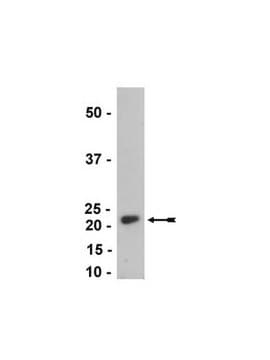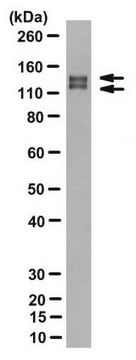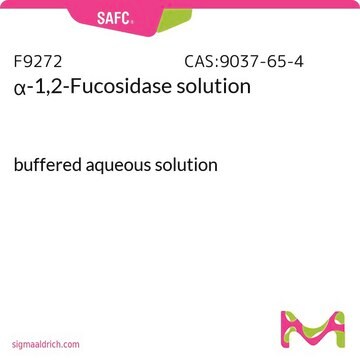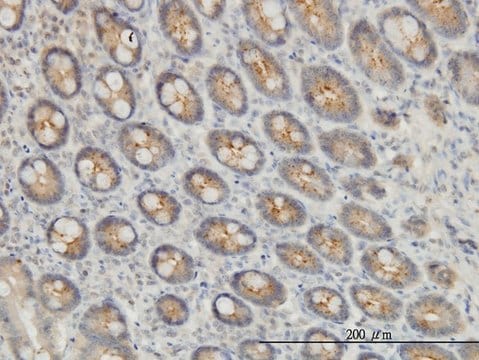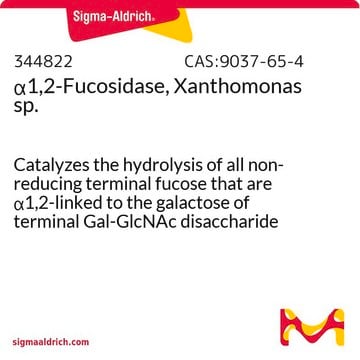MABT186
Anti-Exo70 Antibody, clone 70X13F3
clone 70X13F3, from mouse
Synonym(e):
Exocyst complex component 7, Exocyst complex component Exo70, rExo70
About This Item
Empfohlene Produkte
Biologische Quelle
mouse
Qualitätsniveau
Antikörperform
purified antibody
Antikörper-Produkttyp
primary antibodies
Klon
70X13F3, monoclonal
Speziesreaktivität
human, rat
Methode(n)
immunocytochemistry: suitable
western blot: suitable
Isotyp
IgG2bκ
NCBI-Hinterlegungsnummer
UniProt-Hinterlegungsnummer
Versandbedingung
wet ice
Posttranslationale Modifikation Target
unmodified
Angaben zum Gen
human ... EXOC7(23265)
Allgemeine Beschreibung
Immunogen
Anwendung
Zellstruktur
Cytoskelettale Signalübertragung
Immunocytochemistry Analysis: A representative lot was used by an independent laboratory in Exo70 cells. (Hsu, S.C., et al. (2001). The Journal of Neuroscience. 21(11):3839–3848.)
Immunofluorescence Analysis: A previous lot was used by an independent laboratory in IF. (Hsu, S.C., et al. (2011). The Journal of Neuroscience. 31(10):3522–3535.)
Qualität
Western Blot Analysis: A 1:1,000 dilution of this antibody detected Exo70 in 10 µg of rat brain tissue lysate.
Zielbeschreibung
Physikalische Form
Lagerung und Haltbarkeit
Hinweis zur Analyse
Rat brain tissue lysate
Haftungsausschluss
Not finding the right product?
Try our Produkt-Auswahlhilfe.
Lagerklassenschlüssel
12 - Non Combustible Liquids
WGK
WGK 1
Flammpunkt (°F)
Not applicable
Flammpunkt (°C)
Not applicable
Analysenzertifikate (COA)
Suchen Sie nach Analysenzertifikate (COA), indem Sie die Lot-/Chargennummer des Produkts eingeben. Lot- und Chargennummern sind auf dem Produktetikett hinter den Wörtern ‘Lot’ oder ‘Batch’ (Lot oder Charge) zu finden.
Besitzen Sie dieses Produkt bereits?
In der Dokumentenbibliothek finden Sie die Dokumentation zu den Produkten, die Sie kürzlich erworben haben.
Unser Team von Wissenschaftlern verfügt über Erfahrung in allen Forschungsbereichen einschließlich Life Science, Materialwissenschaften, chemischer Synthese, Chromatographie, Analytik und vielen mehr..
Setzen Sie sich mit dem technischen Dienst in Verbindung.